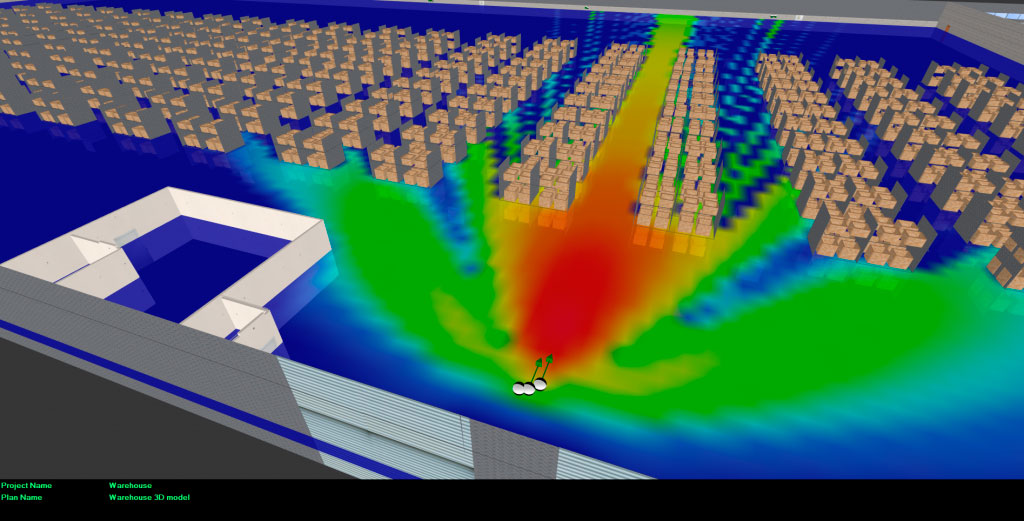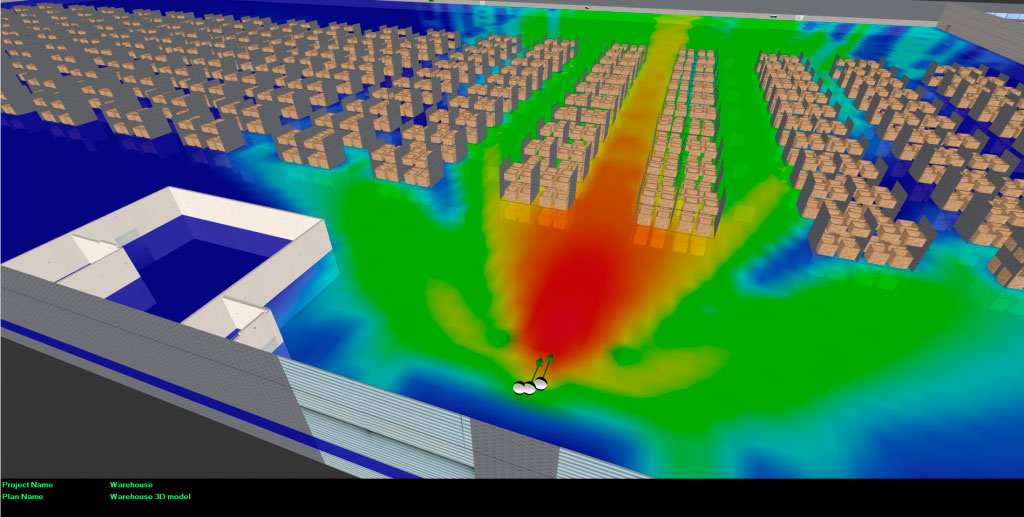Why is Network Design Prediction Accuracy So Important?
Share

In today’s interconnected world, network infrastructure is the backbone that enables seamless communication and connectivity. Whether it’s wireless networks, telecommunications, or smart buildings, the design and optimization of network systems are critical for delivering reliable and efficient connectivity. Among the various factors that contribute to successful network design, prediction accuracy stands out as a vital aspect. In this blog post, we will explore the significance of network design prediction accuracy and why it is crucial for ensuring optimal network performance.
The Impact of Network Design Prediction Accuracy
Cost-Effective Planning and Deployment:
Accurate prediction of network performance allows for cost-effective planning and deployment. By obtaining precise estimates of factors such as signal strength, coverage areas, capacity requirements, and potential interference, network designers can optimize the placement of equipment and allocate resources efficiently. This helps to avoid costly mistakes during the design and implementation phases, ultimately saving time and money.
Optimal Network Performance:
Network design prediction accuracy is directly linked to achieving optimal network performance. Accurate predictions enable designers to identify and address potential issues or bottlenecks before the network is deployed. By accurately estimating coverage areas, signal propagation, and interference levels, designers can fine-tune the network architecture to ensure seamless connectivity, minimal latency, and high-speed data transfer. This leads to an enhanced user experience and increased productivity.
User Satisfaction and Productivity:
The success of any network design depends on user satisfaction and productivity. Accurate prediction of network performance helps ensure that users have consistent and reliable connectivity. By anticipating potential coverage gaps or areas with poor signal strength, network designers can optimize the network layout, adjust antenna placement, and make informed decisions about infrastructure upgrades.
This results in improved user satisfaction, increased productivity, and reduced frustration due to connectivity issues. The Term “Users” also has an evolving definition, “Users” in the past was often thought of as human device-carrying individuals, but with the onset of IOT and Smart systems, machines are also now bandwidth-hungry “Users”. Accurate prediction and network performance are essential to ensure these hungry devices are fed and perform the smart tasks they were designed to do.
Future-Proofing and Scalability:
Network design prediction accuracy plays a crucial role in future-proofing network infrastructure. By accurately estimating future demands, such as increased user growth, changing usage patterns, or technological advancements, designers can plan for scalability and accommodate future needs. Accurate predictions allow for the implementation of network architectures that can handle evolving requirements without requiring significant redesign or costly upgrades.
This proactive approach ensures that the network remains efficient and adaptable in the face of emerging technologies and increasing demands. Early planning also enables users to consider the interoperability of future systems. Without pre-emptive planning, coordinating the various future IOT and smart systems and ensuring their compatibility with each other and the overall network can become a daunting task.
The Role of iBwave’s Prediction Accuracy
iBwave, a leading provider of software solutions for in-building network design and planning, has a remarkable class-based approach to prediction accuracy. By eliminating the fast fading component and applying a sophisticated “smoothing” algorithm to field data, iBwave ensures highly accurate predictions tailored to specific classes of areas.
iBwave’s Results
The results obtained from iBwave Design prediction accuracy testing demonstrate its impressive performance across various frequencies and venues. From 700 MHz to 28 GHz, the prediction mean error mostly falls within the -4 to 5 dB range, with absolute mean error primarily in the 4 to 6 dB range. The standard deviation is typically within 3 to 6 dB. These values are applicable to iBwave‘s default, non-calibrated FRT (Fast Ray Tracing) prediction.
It is essential to note that calibration can further enhance accuracy by 0.5 to 2 dB. iBwave’s calibrated FRT prediction offers even more precise estimates, meeting the demands of today’s complex network design requirements.
About Fast Ray Tracing
Fast Ray Tracing (FRT) is a powerful prediction modeling technique utilized by iBwave, which accurately traces electromagnetic waves’ paths in complex environments, considering reflections and diffractions. Its efficiency in generating precise predictions enables network designers to optimize plans quickly and deploy cost-effective, high-performing networks. This makes iBwave’s FRT a valuable tool for creating seamless and reliable connectivity experiences.
Example:
Network design in a highly reflective warehouse environment using one AP with no reflections and diffractions considered compared to a design considering reflections and diffractions. You can see in the images below how the signal reflects and diffracts of the surfaces resulting in more coverage in adjacent rows. Designing without considering reflections and diffractions (image on the left) may lead to overdesigning your network and, ultimately, higher costs.
iBwave has several ways of achieving the highest prediction accuracy. Read more in our blog!
Conclusion
In conclusion, network design prediction accuracy is a crucial factor in delivering efficient and reliable network infrastructures. The ability to anticipate network performance, optimize resources, and future-proof the infrastructure ensures cost-effective planning, user satisfaction, and scalability. iBwave’s class-based approach and impressive results showcase its commitment to providing accurate and efficient network design solutions. As the demand for seamless connectivity continues to grow, iBwave’s prediction accuracy remains an essential tool in building the networks of tomorrow.
To learn more about iBwave Design prediction accuracy, read our full white paper written by Vladan Jevremovic and Ali Jemmali!
- Transforming Wireless Network Management with Digital Twins - April 2, 2025
- Top 3 Trends Shaping Network Design in 2025 - January 17, 2025
- Streamlining Network Design with GPU-Accelerated Predictions - May 21, 2024





















